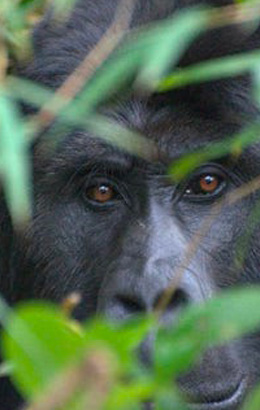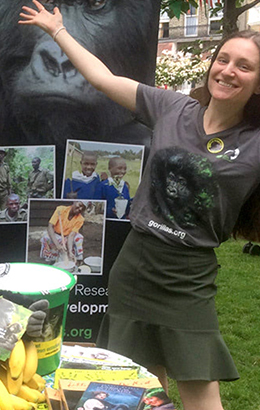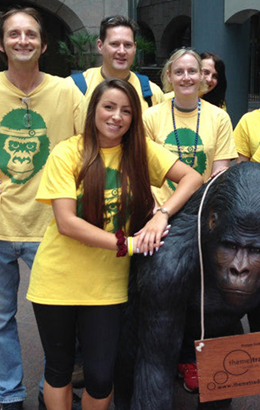Why snares are a gorillas’ worst enemy

Even a simple piece of wire can main or even kill a strong gorilla
I’ve been working in gorilla conservation for more than 20 years, and I can tell you that you never get used to the distress of finding a gorilla – especially a helpless infant – caught up in a snare.
Snares are a gorilla’s – and a conservationist’s – worst nightmare. For something so simple, they can cause serious harm, leaving gorillas that become trapped in them maimed, or even dead. Added to this, even if a gorilla survives being ensnared, both the individual and their larger group will suffer severe trauma, and this has even been seen to disrupt group dynamics. All this is despite the fact that the snares left on the forest floors in their thousands aren’t actually meant for gorillas. They are put down by poachers wanting to catch small mammals, either to feed themselves or their families, or to sell at a local market.
Of course, poaching within the National Parks is illegal, and anyone getting caught in the act faces the prospect of a heavy fine or even imprisonment. The problem is that, with so much acute poverty in this part of Africa, many people still think it’s worth the risk. What’s more, while there are tough rules in place, they are extremely difficult to ignore, largely because of the huge amounts of space rangers have to protect.
That’s not to say the rangers don’t do a great job. They really do. In fact, one patrol can uncover dozens of snares every day, keeping the critically-endangered gorillas safe from harm. What’s more, the rangers carry out this vitally important work while having to deal with other deadly threats, above all the prospect of coming across a group of armed milita involved in illegal mining activities.

Studies show just how widespread the problem of snares really is
Our work in the Walikale reserve in eastern DR Congo has highlighted just how bad the problem is. We funded a team of researchers and rangers to carry out the first comprehensive mapping of the reserve, including the numbers and ranges of its resident eastern lowland gorillas. Worryingly, they found hundreds of snares, and they know that the ones they did find and remove were just the tip of the iceberg.
So what can be done to remove this deadly menace? Without a doubt, we need to carry on supporting the brave rangers who patrol the gorilla habitat daily. They know the routes gorillas are most likely to take as they move through the forest in search of fresh food and places to sleep, so they can target their snare detection efforts. They are also best-placed to apprehend poachers setting down snares in the National Parks and ensuring they are brought to justice.
Such immediate solutions are invaluable, and they are a big reason why the situation has improved so much since the 1980s, when Dr Dian Fossey felt poaching was out of control and might even spell the end of gorillas in the wild for good. At the same time, however, we need to look at – and address – the reasons why people set snares in the forest. Poachers know the risks and the rewards are often very slight. But many are desperate and feel they have no other choice. That’s why we work directly with communities themselves, listening to their needs and thoughts. With your support, we have set up a Reformed Poachers initiative, helping dozens of men earn a livelihood that is both more sustainable and safer for them, and also better for the gorillas.
Sadly, the problem of snares looks unlikely to go away anytime soon. That’s why we will keep on supporting both these immediate and longer-term solutions. But just because poaching is a fact of life here in the Virungas doesn’t make it any easier to live with, and I will carry on dreading receiving that phone call or email informing me that yet another of our precious gorillas has fallen victim to these crude but deadly traps.















